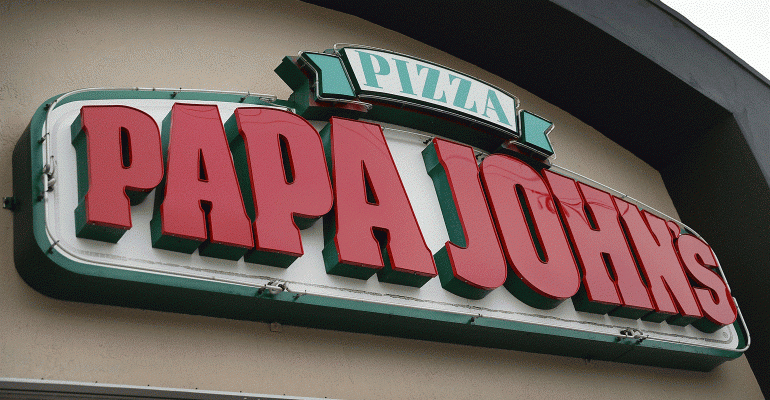Earlier this month, Papa Johns announced its Back to Better 2.0 strategy, a comprehensive plan focused on driving comp sales, average unit volumes, margins, and net new unit growth. The company spent the past six months putting the plan together, working alongside franchisees for what CEO Rob Lynch said will create “transformational changes in the system.”
“We’re always looking to make franchisees more profitable. Unit economics are the heart and soul of every system. When franchisees are making money, they want to build more restaurants and that’s the healthiest indicator of a brand’s health,” Lynch said during a presentation at the ICR Conference in Orlando, Fla.
Papa Johns has had a remarkable run the past several years, including and especially through the pandemic. One thing impacting franchisees’ margins, however, has been the company’s marketing expenditure. For about the past decade, the company’s required rate has been 8% – 5% for national and 3% for local marketing.
“That’s about as high as it gets,” Lynch said. “Most other nationally scaled brands have moved away from the co-op and local marketing model. For the productivity that is garnered by leveraging the national media platform, you can buy it at scale, get a better rate, get access to better programs. It also allows you to put more working dollars up against media versus having to spend non-working dollars up against agencies.”
So, Papa Johns will no longer require franchisees to spend on local marketing and their total effective rate will decrease, offering an opportunity for franchisees to pick up 200 basis points of margin at the restaurant level with a bigger impact, Lynch said.
“We are expecting a pretty significant increase in our return on advertising spending. Before we even add a dollar, we're going to get more effectiveness from moving local to national,” he said.
“So, moving from 8% to 6% will have more of a sales driving, positive effect,” Lynch said. “The change in marketing was voted on by our franchisees, so not only is this a big improvement in our ability to drive the brand, it’s also a vote of confidence from our system.”
Because of this change, and riding a strong back half of 2023, Papa Johns expects to accelerate year-over-year comps. Another major piece of Back to Better 2.0 expected to contribute to higher comps are the company’s new growth incentives, designed to fill “untapped and underserved markets in North America.” North America, Lynch said, is the company’s priority for 2024, “both on topline sales growth as well as new development.”
The incentives include a National Marketing Fund contribution waiver through the first five years of operations. Lynch said this is the largest development incentive in the brand’s history and it’s unique as it’s not based on royalty fees or “some other P&L expenditure-based incentive.”
“For every new store that is built in 2024, those stores will not have the obligation to pay into the national market and will receive 600 basis points of flow-through in the restaurant,” he said. “So, these restaurants will be the most profitable restaurants in our system for franchisees.”
Also, the company is moving its fixed rate for its commissary business. Historically, the rate has been at 4%, and Papa Johns will increase the fixed operating margin charged by its commissaries by 100 basis points each year for the next four years, moving it to 8% by 2027. The company is offering incentives to mitigate these costs, including an opportunity to reach lower than 4% through increased case-volume purchases. Lynch said increased marketing and development will also reduce shared supply chain costs across the system.
Together, these initiatives build on Back to Better 1.0, which was introduced last year and focused on creating efficient operations. The company’s “out the door speed” has decreased from 28 minutes last year to 19 minutes now, for instance.
“When you’re running great operations, you can pour fuel on the fire and know you’re going to get that return on investment,” he said. “Our franchisees right now are healthy. They’re making money. And everything we just announced will make them more profitable. I’ve never been more bullish, even when we were up 17% in 2020.”
Contact Alicia Kelso at [email protected]





